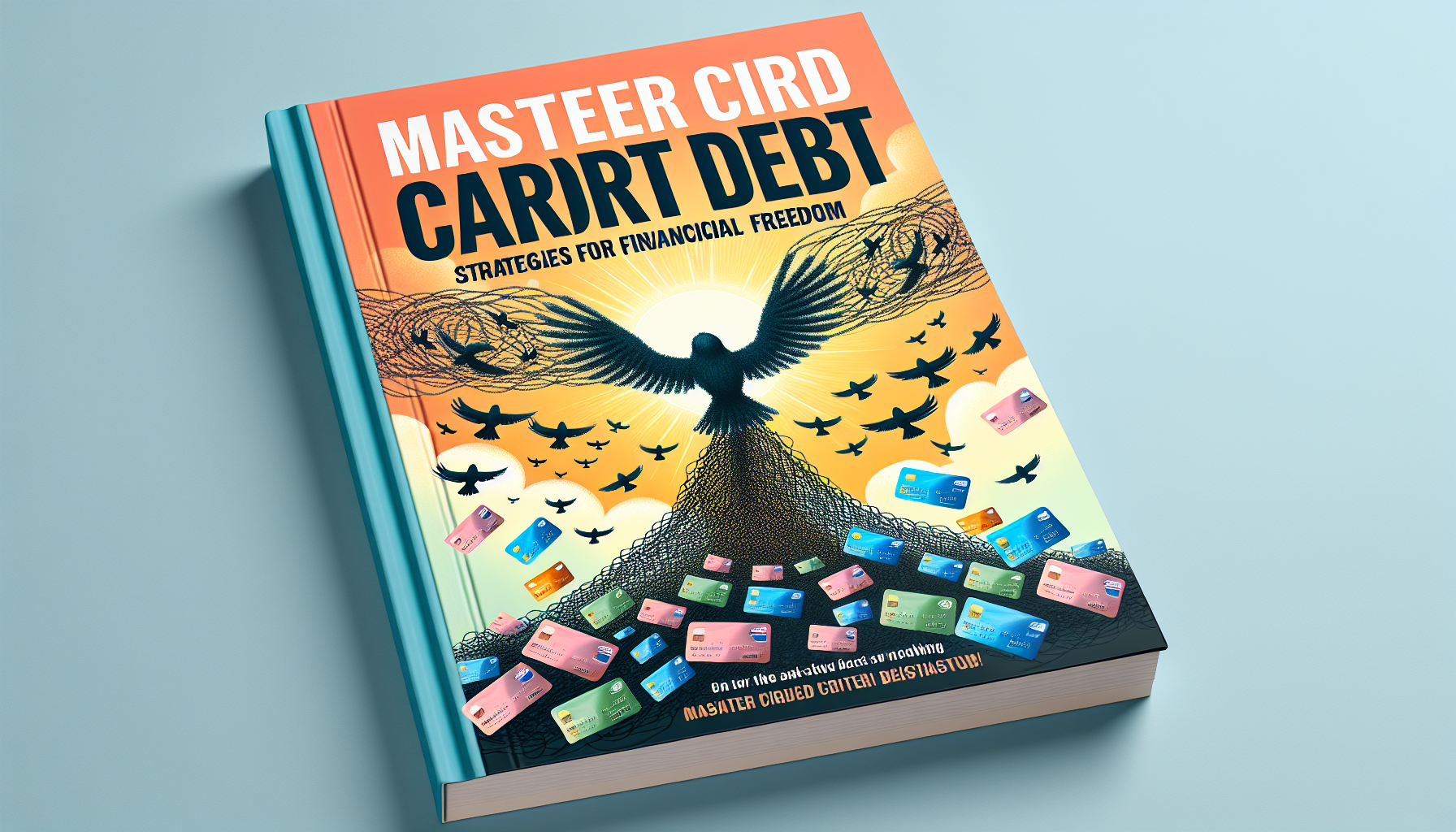Uncategorized
Mastering Credit Card Debt: Strategies for Financial Freedom

Navigating the world of credit card debt can be daunting, yet taking control is within reach with the right strategies and knowledge. In this comprehensive guide, we’ll explore practical steps and smart tactics to manage and pay off your credit card debt, setting the stage for lasting financial stability and peace of mind.
Understanding Your Credit Card Debt
Knowing exactly what you owe is the first step toward effective debt management. 💳 Identify the interest rates, due dates, and minimum payments for each card you hold.
Step 1: List All Your Debts
Create a detailed list of your debts, including amounts, interest rates, and any associated fees. This transparency is crucial for prioritizing payments.
Step 2: Analyze Your Spending
Review past statements to see where your money is going. Highlight areas where you can cut back to free up funds for debt repayment.
Creating a Repayment Plan
Once you have a clear view of your debts, devise a plan that aligns with your financial situation.
Snowball vs. Avalanche: Choose Your Method
Decide between paying off the smallest balances first (snowball) or targeting the highest interest rates (avalanche). Each method has its psychological and financial benefits.
Set a Realistic Budget
Draft a budget that prioritizes debt payments while covering essential expenses and allowing modest personal spending — striking a balance is key.
Boosting Your Repayment Efforts
Discover ways to amplify your debt repayment speed and efficiency.
Increase Your Income
Look into side hustles, freelance opportunities, or overtime work to boost your income stream. More income means more power to reduce debt.
Negotiate Lower Interest Rates
Contact your credit card companies to negotiate lower interest rates. A polite request can sometimes result in significant savings. 💬📞
✅ Avoid New Debts: Resist the temptation to accumulate more debt. Use cash or debit to stay within your means. ✋💸
Long-Term Financial Health
Maintaining debt-free living is just as important as becoming debt-free.
Establish an Emergency Fund
Saving three to six months’ worth of expenses builds a financial buffer, reducing the likelihood of reverting to credit cards in an emergency.
Build and Maintain Good Credit
Timely payments, a mix of credit types, and low credit utilization contribute to a healthy credit score, which can save you money and stress in the long run.
FAQs on Credit Card Debt Management
What’s the best way to get out of credit card debt?
The best way is to commit to a repayment strategy that suits your financial situation, whether it’s the snowball, avalanche, or a custom plan, combined with increased income and disciplined spending.
Should I close accounts once they’re paid off?
Not necessarily. Keeping accounts open can help maintain your credit utilization ratio, boosting your credit score. Consider your overall credit picture before making a decision.
💡 Good luck on your journey to financial freedom! With persistence and the right strategies, overcoming credit card debt is attainable. Stay focused, adaptable, and motivated. Your financial health will thank you! 😊
Uncategorized
Mastering Financial Literacy: Empower Your Future Today!

Mastering Financial Literacy: Empower Your Future Today!
Financial literacy is more than just understanding numbers — it’s about making informed decisions that manifest in a secure and prosperous future. Whether you’re grappling with debt, learning how to budget effectively, or seeking ways to invest wisely, this guide is designed to empower you every step of the way.
Understanding Financial Literacy
Financial literacy encompasses the skills and knowledge that allow you to make informed and effective money-management decisions. It’s critical in developing responsible money habits and achieving financial independence.
Why Financial Literacy Matters
- Improves your ability to manage financial resources effectively for lifetime security.
- Enables informed financial decision-making.
- Enhances your ability to budget, save, and invest wisely.
Building a Budget That Works
Creating a budget is the cornerstone of financial stability. Follow these actionable steps to craft a budget that aligns with your goals and lifestyle:
Steps to Effective Budgeting
- Assess Your Income and Expenses: List all your income sources and monthly expenses. Be thorough!
- Set Clear Goals: Establish short-term and long-term financial goals. This will guide your budget priorities.
- Create a Plan: Allocate funds to each expense category, ensuring essential costs are covered first.
- Monitor and Adjust: Regularly review your budget and make adjustments as needed to meet your goals.
Strategies to Effectively Manage Debt
Debt can be a significant hurdle to financial freedom. Implement these strategies to manage and eliminate debt effectively:
Debt Reduction Techniques
- Debt Snowball Method: Pay off smallest debts first to build momentum.
- Debt Avalanche Method: Tackle high-interest debts first to minimize cost over time.
- Consider Consolidation: Streamline payments with a debt consolidation loan if it reduces interest rates and costs.
Investing for Long-term Wealth
Investing is a powerful tool for building wealth over time. Start early and consider these smart strategies:
Investment Tips
- Diversify Your Portfolio: Spread investments across different asset types to mitigate risk.
- Contribute Regularly: Set up automatic contributions to investment accounts.
- Educate Yourself: Continuously learn about markets and instruments to refine your strategy.
FAQs on Financial Literacy
- What is financial literacy and why is it important? Financial literacy involves understanding and using various financial skills effectively. It’s crucial for making sound financial decisions and achieving independence.
- How can I start learning about personal finance? Begin by reading articles, books, and taking online courses focused on budgeting, saving, and investing.
- What are some basic investing tips for beginners? Start with setting clear goals, learning about different investment vehicles, and considering working with a financial advisor if needed.
Mastering financial literacy is a journey. By applying these principles, you’ll not only gain control over your finances but also pave the path to a more secure and prosperous future. 💸
Uncategorized
SEO-optimized title that sparks curiosity and delivers value

Write a well-structured blog article of up to 5000 words, fully optimized for SEO. The content should be geared toward readers who want to improve their financial life — whether they’re paying off debt, learning how to budget, saving for the future, or exploring smart ways to invest and protect their income.
Focus on practical advice, responsible money habits, and easy-to-follow strategies that help people build lasting financial stability, regardless of their current income or experience.
⚙️ Apply SEO techniques:
Use
and
subheadings with the main keyword and natural variations
Include checkmark ✅ or bullet lists where helpful
End with a FAQ block answering real and common questions on the topic
Use emojis 💸📊🏡 where appropriate to keep the tone friendly and relatable
Make sure the article is accurate, up-to-date, and formatted in clean HTML. Maintain a clear, accessible, and empowering tone. Deliver content with authenticity, financial responsibility, and encouragement. Help the reader take control of their money, build confidence, and make informed decisions that support their future.
Uncategorized
Unlock Financial Success: Essential Personal Budgeting Strategies You Need to Know

Write a well-structured blog article of up to 5000 words, fully optimized for SEO. The content should be geared toward readers who want to improve their financial life — whether they’re paying off debt, learning how to budget, saving for the future, or exploring smart ways to invest and protect their income.
Focus on practical advice, responsible money habits, and easy-to-follow strategies that help people build lasting financial stability, regardless of their current income or experience.
⚙️ Apply SEO techniques:
Use
and
subheadings with the main keyword and natural variations
Include checkmark ✅ or bullet lists where helpful
End with a FAQ block answering real and common questions on the topic
Use emojis 💸📊🏡 where appropriate to keep the tone friendly and relatable
Make sure the article is accurate, up-to-date, and formatted in clean HTML. Maintain a clear, accessible, and empowering tone. Deliver content with authenticity, financial responsibility, and encouragement. Help the reader take control of their money, build confidence, and make informed decisions that support their future.
-

 Fashion8 anos ago
Fashion8 anos agoThese ’90s fashion trends are making a comeback in 2017
-

 Entertainment8 anos ago
Entertainment8 anos agoThe final 6 ‘Game of Thrones’ episodes might feel like a full season
-

 Fashion8 anos ago
Fashion8 anos agoAccording to Dior Couture, this taboo fashion accessory is back
-

 Entertainment8 anos ago
Entertainment8 anos agoThe old and New Edition cast comes together to perform
-

 Sports8 anos ago
Sports8 anos agoPhillies’ Aaron Altherr makes mind-boggling barehanded play
-

 Business8 anos ago
Business8 anos agoUber and Lyft are finally available in all of New York State
-

 Entertainment8 anos ago
Entertainment8 anos agoDisney’s live-action Aladdin finally finds its stars
-

 Sports8 anos ago
Sports8 anos agoSteph Curry finally got the contract he deserves from the Warriors



